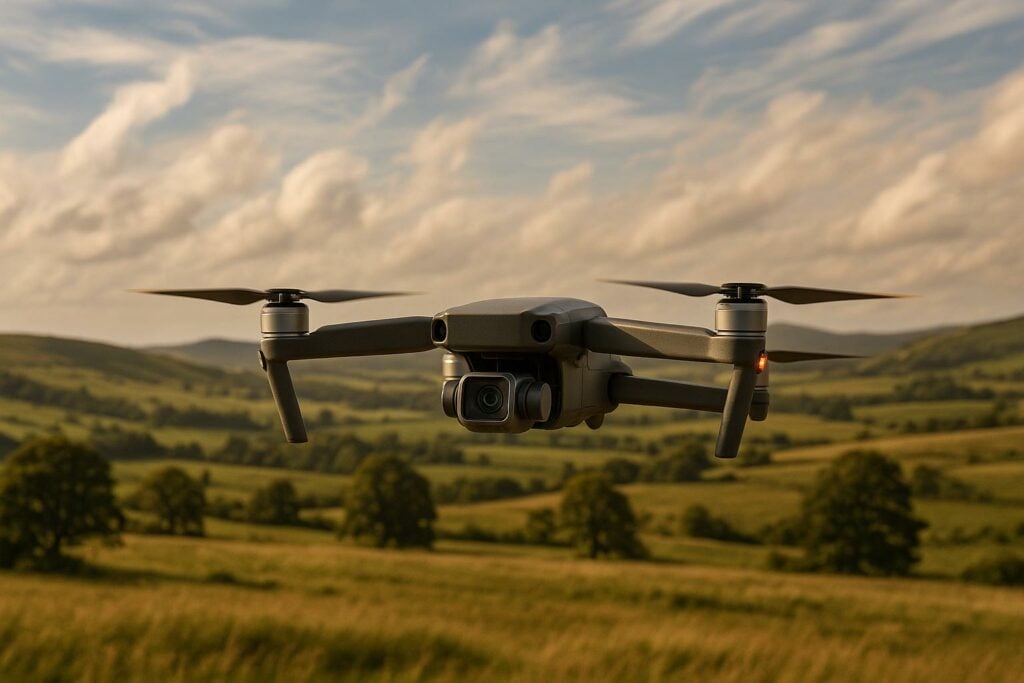Drones have revolutionized real estate marketing, allowing agents and property managers to capture breathtaking aerial views of properties. However, flying drones in windy conditions can be challenging – even risky – if not approached with proper knowledge and techniques. In this article, we’ll explore essential tips and best practices for flying drones safely in windy weather, equipping you with the confidence to handle such situations while preserving your investment and ensuring top-tier results for property listings.
Understanding Wind and Its Impact on Drone Operation
Wind is one of the biggest challenges drone pilots face, especially during aerial photography and videography. It’s critical to understand how wind interacts with your drone and the precautions you must take to avoid accidents.
How Wind Affects Drone Performance
- Battery Drainage: Flying against wind significantly increases battery consumption, potentially leaving your drone without enough power to return home.
- Stability and Control: Strong winds can destabilize your drone, causing shaky footage or, worse, loss of control.
- Risk of Loss: If the drone is swept by high winds – especially over water or inaccessible areas – it may be impossible to recover.
A good rule of thumb is to avoid flying in wind speeds exceeding two-thirds of your drone’s maximum speed. For instance, if your drone’s top speed is 45 mph, avoid flying in winds above 30 mph.
Essential Tools for Assessing Weather Conditions
Accurate wind data is crucial for determining whether it’s safe to fly. While general weather reports can provide broad estimates, specialized tools offer detailed insights for drone pilots.
- UAV Forecast App: This app provides wind profiles at various altitudes, along with a detailed overview of weather conditions. It even gives a fly/no-fly recommendation based on the data.
- Storm Raider App: While not drone-specific, this app offers up-to-date weather data, including wind speed, rain, and other relevant factors. Its ability to forecast conditions hours ahead makes it a great tool for pre-flight planning.
By using these tools, you can minimize guesswork and plan your flights with confidence.
Choosing the Right Drone for Windy Conditions
Not all drones perform equally well in windy weather. Heavier, larger drones like the DJI Phantom series or the Mavic 3 tend to handle strong winds better than smaller models, such as the DJI Mini series. Factors influencing wind performance include:
- Weight: Heavier drones are less likely to be carried off by wind gusts.
- Maximum Speed: Faster drones can counteract wind more effectively.
- Propeller Size: Larger propellers generate more thrust, helping maintain stability.
If you frequently tackle challenging weather conditions, investing in a robust drone model optimized for such scenarios is a wise decision.
Best Practices for Flying Drones in Windy Weather
When flying in windy conditions, preparation and technique are key to ensuring safety and success. Below are actionable steps to follow during takeoff, flight, and landing.
1. Takeoff Tips
- Choose Sheltered Spots: Launch from a location protected from wind, such as behind a building, wall, or cluster of trees. Be cautious of obstacles in your flight path.
- Align with the Wind: Position the drone so that its camera faces the wind direction during takeoff. This allows for smoother ascension without tipping.
- Hand Launching: If launching by hand, hold the drone level with the wind direction. Avoid tilting the drone at any angle during takeoff to prevent sudden instability.
2. Flying Techniques
- Fly Against the Wind First: Start your flight by moving against the wind. This helps determine how much battery is consumed under challenging conditions. On your return, the wind will assist in bringing the drone back.
- Monitor Battery Closely: Windy conditions drain batteries faster. If you normally return at 30% battery, consider flying back at 40% to allow a safety margin.
- Use Sport Mode: Activating sport mode maximizes your drone’s speed, helping it counter wind gusts more effectively.
3. Landing Safely
Landing a drone in windy weather can be riskier than takeoff. Use these methods to ensure a smooth landing:
- Hand Catching: Hover the drone directly above you, then carefully grab its underside while keeping your hand steady. Wait for the propellers to stop completely before moving the drone.
- Ground Landing: If you prefer a ground landing, align the drone so it faces against the wind and use the same sheltered spot as your takeoff location.
Common Mistakes to Avoid
Even experienced drone pilots can fall victim to common errors in windy conditions. Avoid these pitfalls:
- Flying Downwind First: This can lead to complications when returning, as the drone must fight against the wind, further draining the battery.
- Underestimating Wind at Altitude: Wind speeds at higher altitudes can be significantly stronger than on the ground. Always check forecasts for varying altitudes.
- Ignoring Obstacle Risks: Sheltered takeoff spots may have nearby obstacles like trees or buildings that could interfere with your flight path.
Key Takeaways
For real estate professionals and drone enthusiasts, mastering windy-condition flying can elevate your aerial photography game and set your listings apart. Here are the most important points to remember:
- Wind Speed Threshold: Avoid flying in winds exceeding two-thirds of your drone’s maximum speed.
- Use Weather Apps: Tools like UAV Forecast and Storm Raider provide accurate wind and weather data for informed decision-making.
- Prioritize Drone Model: Larger, heavier drones like the DJI Mavic 3 handle wind better than lighter models.
- Fly Against the Wind First: This allows you to gauge battery consumption before returning with wind assistance.
- Monitor Battery Closely: Windy conditions can drain batteries faster – adjust your return timing accordingly.
- Takeoff and Landing Precautions: Use sheltered spots, align with the wind, and consider hand catching for safer operations.
- Sport Mode for Stability: Activate sport mode for maximum speed and control during challenging flights.
By following these tips and leveraging the right tools, you’ll ensure smooth, safe drone flights that produce stunning visuals for your property listings.
Conclusion
Flying drones in windy conditions requires a blend of preparation, skill, and the right equipment. For real estate professionals, mastering this skill can mean the difference between an exceptional property showcase and a costly mishap. By understanding wind dynamics, utilizing proper techniques, and selecting the right drone, you’ll not only protect your investment but also deliver breathtaking aerial content that captivates potential buyers.
With practice and careful planning, even the most challenging weather conditions can be navigated safely and effectively. Remember, when in doubt, it’s always better to stay grounded than risk losing your drone. Safe flying!
Source: "How to Fly a Drone in Windy Conditions (Step-by-Step Guide)" – The Drone Angel, YouTube, Sep 6, 2025 – https://www.youtube.com/watch?v=BNer1MH9rfY
Use: Embedded for reference. Brief quotes used for commentary/review.











